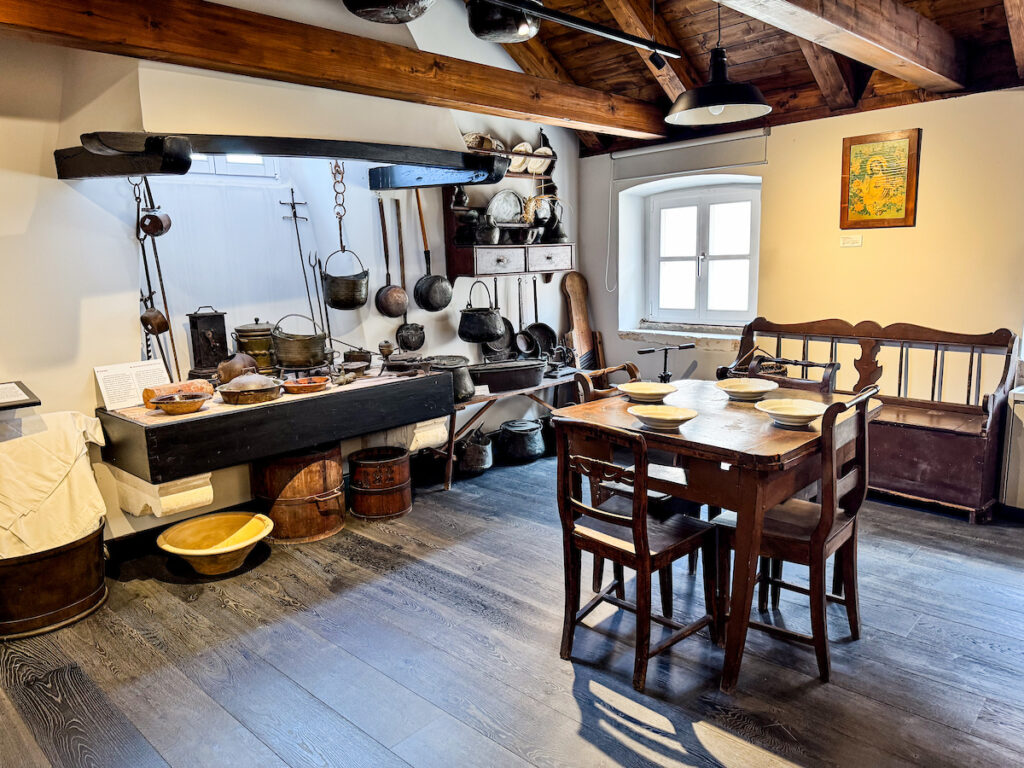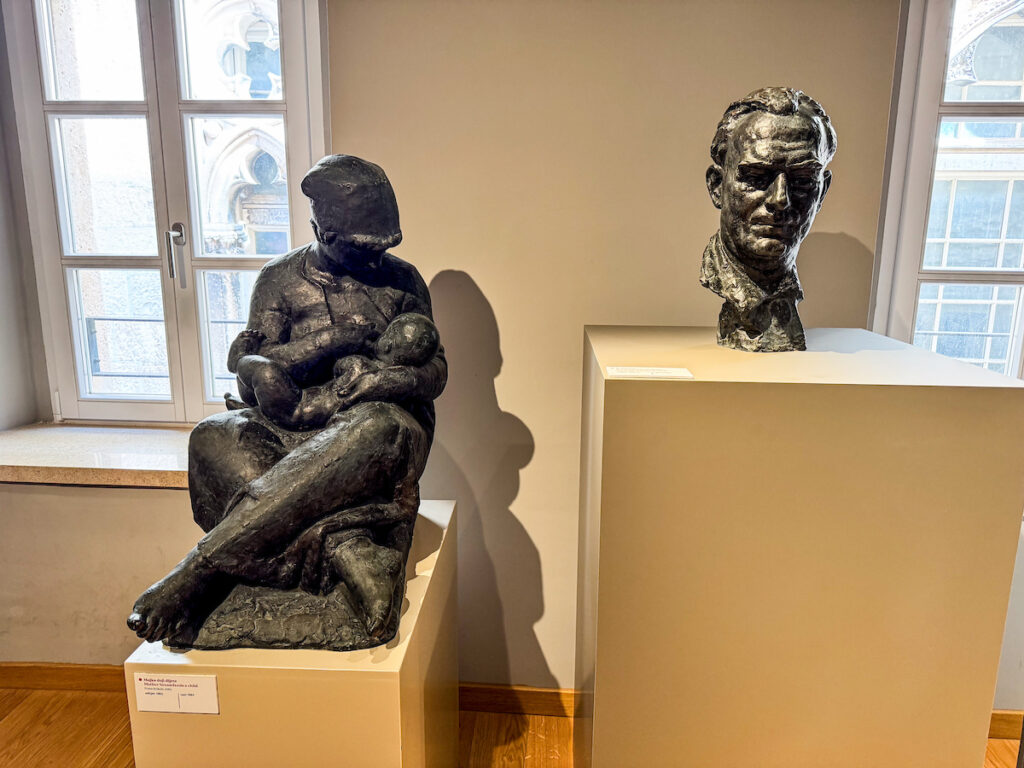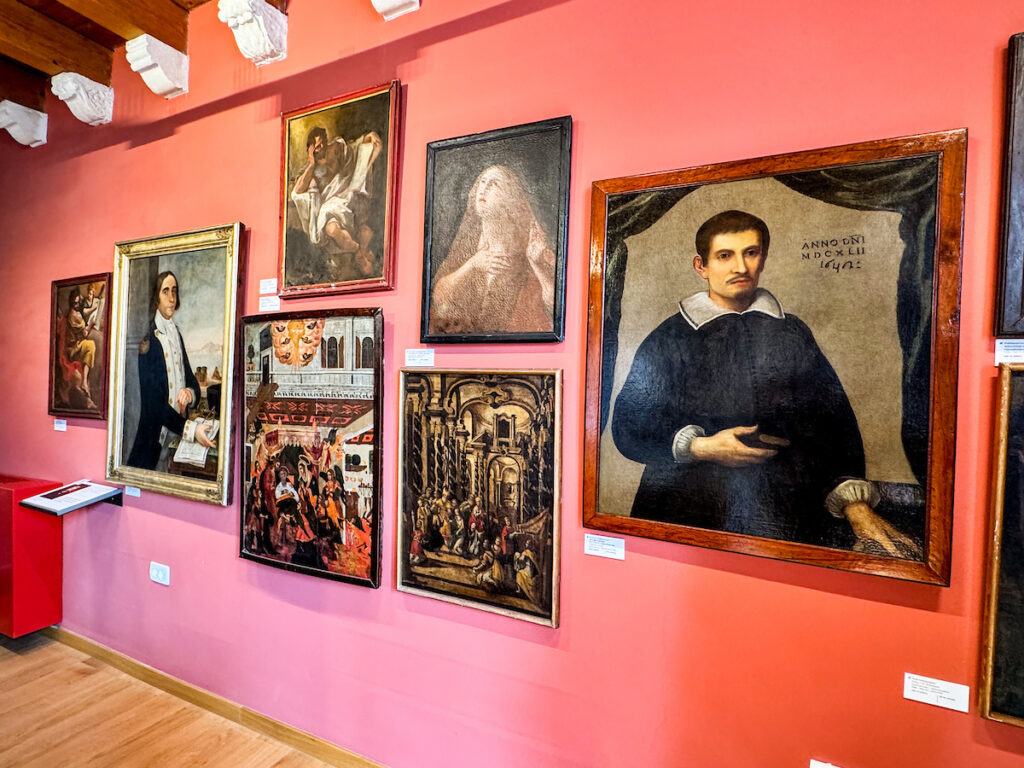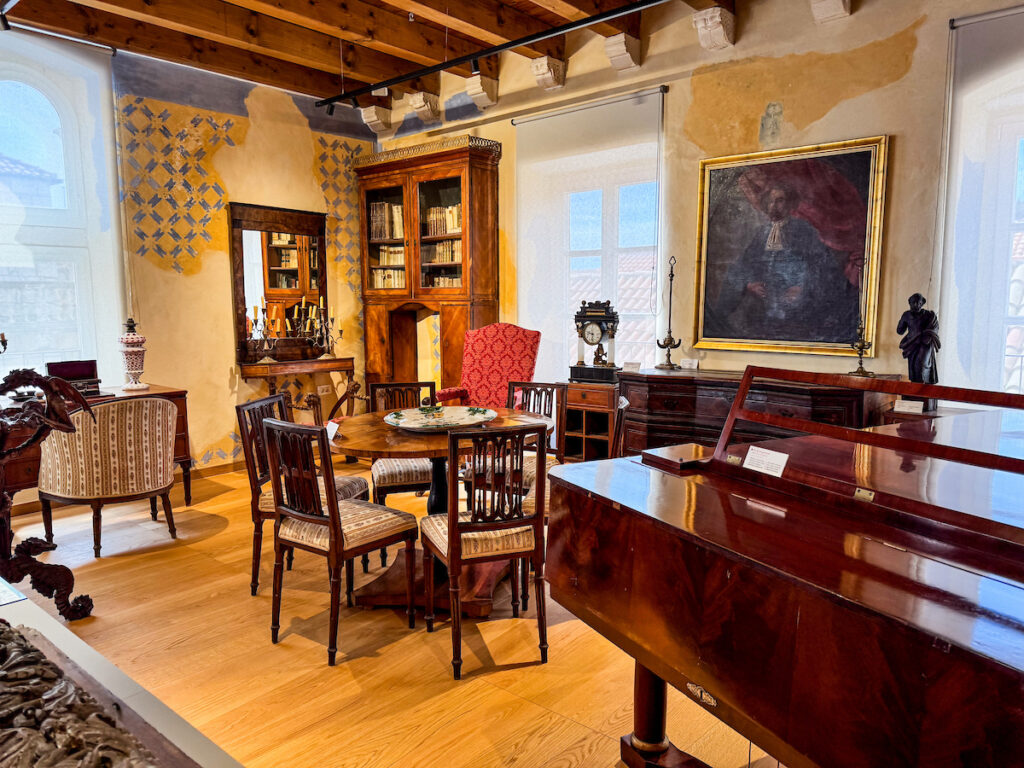Korčula is an island in the Adriatic Sea on the Dalmation Coast of Croatia covering 106 square miles. On the east end of the island is a town of the same name that holds thousands of years of history. Right in St. Mark’s Square facing the Cathedral Sveti Marko is the Gabrielis Palace that has been transformed into the Korčula Town Museum. The history in the museum includes influences from Greeks, Roman, Venetian, Austrian, Hungarian, French, and British cultures that have made the town how it is today.

The Gabrielis Palace was built in the 15th and 16th centuries as the home of the Gabrielis family. The three-story building has a pale stone facade with a balcony and coat of arms sculpted into the stone, representative of the Renaissance architecture of the time. Since 1957 the Palace has become home to the city’s museum showcasing its traditional crafts of stonemasonry and shipbuilding. All of the exhibits from prehistory to modern day are accompanied by information boards in Croatian and English.

In the basement of the museum, a beautiful collection of vases and amphorae (ancient vase storage jars) from centuries ago as well as other historic items are on display. The upper floors house a collection of paintings, pottery, sculptures, shipbuilding artifacts, coats of arms, old works of art, and a replica of a kitchen that operated in the attic hundreds of years ago.

Among the hundreds of interesting items are the bronze pendant of Italian sculptor Tiziano Aspetti and an 1819 piano played by Beethoven’s friend, Edith Streicher in the 19th century. Another notable item on display is a stone tablet inscribed with Greek called ‘The Psephism from Lumbarda‘ dated back to the 4th century BC. It is the oldest written document found in Croatia and documents the distribution of land of Korčula by Greek colonists.
The shipbuilding exhibit houses models of old ships and various tools used to build the ships like drills, saws, and even blueprint and drawings. As for the art exhibits, the collection is quite vast and includes unique drawings of the Korčula Old Town Entrance, drawings of St. Mark’s Square, as well as immaculate sculptures and paintings from local artists through the years.

One of the most important items in the museum is the Statute of Korčula Town from 1214. The Statute is a legal document from the 13th century that covers the laws of Korčula city and the island. Though the laws in The Statute were passed in 1214, the remaining preserved page is from 1265. The Statue was edited until the 16th century and its oldest section was written in Latin that was later translated into Italian. Inside the Korčula Town Museum Photo Credit: Amy Harris/The Travel Addict
The attic of the museum is a replica of a typical 16th century Korčula kitchen. Korčula homes usually had their kitchens in the attic to provide sufficient light and ventilation. The set-up includes kitchen furniture, utensils, and numerous kitchen items. Stepping into this replica was a memorable experience and felt like a step back in time.
The museum is open for visitation July – September from 9am-9pm and October – March from 10am-1pm. The fee to go through this incredible little museum is just $5.00 (20kn) per person.

